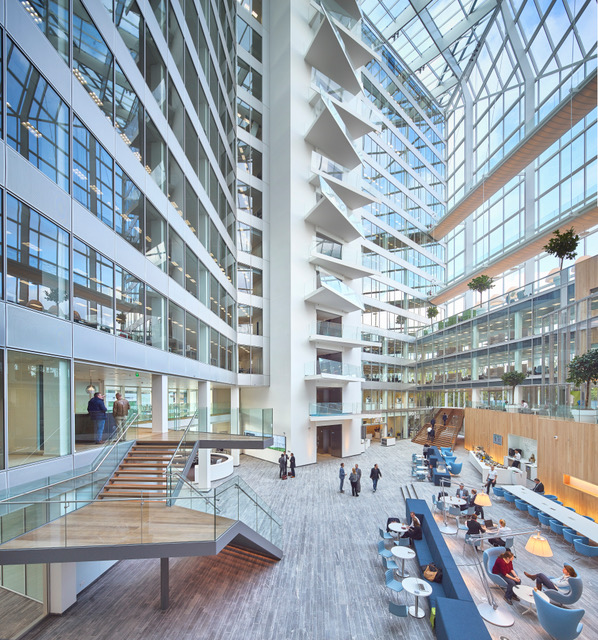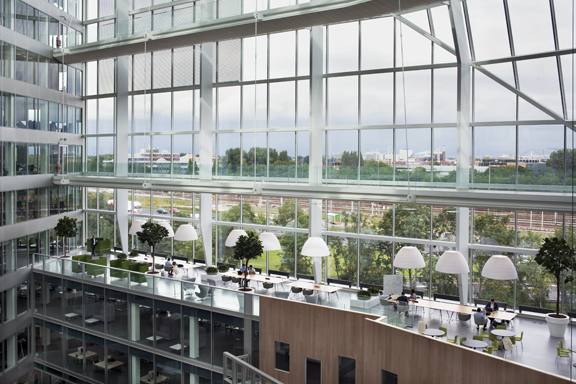
The work day may start the same as anywhere else, but the minute employees enter The Edge building in Amsterdam all bets are off.

Forget everything you have ever associated with a modern, big-city office tower. The rules are all changed at this super environmentally-friendly building, whose main tenant is the consulting firm Deloitte.
The Edge is considered the greenest smart building in the world, according to the U.K.-based Building Research Establishment Environmental Assessment Method (BREEAM), which gave it the highest sustainability score ever awarded at 98.4 per cent. Overall, the building produces 102% of its own energy.

To say artificial intelligence is everywhere would be an understatement. Your every move, whim or tendency is tracked by a mobile app.
It even knows when an employee leaves home. Once at work, a camera snaps a photo of your licence plate, matches it with your employment record, raises the gate, then guides you to a vacant parking spot.
But that’s just the start. The app can tell when fewer employees are in certain areas of the building so sections can be shut down, cutting heating and lighting costs. If you are sensitive to bright lighting, or a certain temperature, then those will be adjusted whenever you enter a new location.

Why would that be needed? Well, for one thing, no one at The Edge has a personal office. A schedule is maintained for employees, channeling them to appropriate work areas each day. That could be a meeting room, a work station, a concentration room … even a cavernous atrium.
Employees use a smartphone as a link. They use it to find colleagues, adjust climate controls – even to manage their in-house gym routines or order food. And those devices can be wirelessly charged on desks, which are all equipped with built-in QI wireless chargers.

About 2,500 workers at Deloitte share 1,000 desks, a concept called hot desking. Not only does this make efficient use of space, but also encourages new relationships and coincidental interactions. Lockers serve as the home base for the day, not offices. These breakthroughs are meant to pull employees away from their fixed locations and rigid ways of thinking.
In all, there are 28,000 sensors. The building’s 6,000 light-emitting diode panels operate using an ethernet-powered lighting system. The panels themselves are filed with sensors – motion, light, temperature, humidity, infrared – to create a digital ceiling. The LED system was used in all office spaces to reduce the energy requirement by around 50% compared to conventional lighting.

Incredibly, there are 65,000 square feet of solar panels on the facades and roof. The energy from solar panels goes to an aquifer thermal energy storage system with two 130-metre deep bore holes in combination with heat pumps to generate all energy for heating and cooling in the building. Excess air from the offices is used again to air-condition the atrium space. The air is then ventilated back out through the top of the atrium where it passes through a heat exchanger to make use of any warmth.

Rainwater is collected on the roof and used to flush toilets, and irrigate the green terraces in the atrium and other garden areas surrounding the building.
That’s not all – not by a long shot, especially on the north-facing terrace, where you will find bees, bugs, bats and birds. There is a continuous path of vegetation there to support the insects and wildlife. Birdhouses and bat boxes are tucked discreetly into the landscaping.

If you happen to be an employee working in this extremely high-tech location – and people are lining up for that opportunity – you needn’t get jittery about privacy issues, since word has it that bosses can’t access personal data from The Edge’s sensors.
Or can they? Perhaps, as George Orwell cited in his prophetic novel, 1984, only Big Brother really knows for sure.